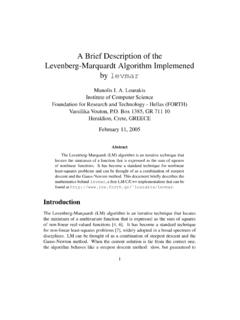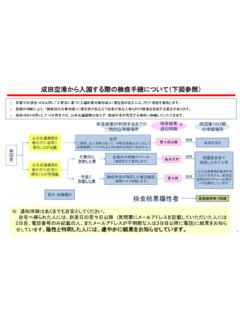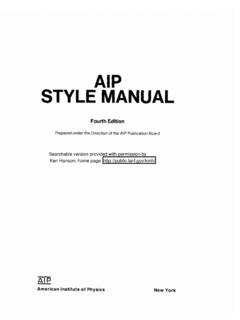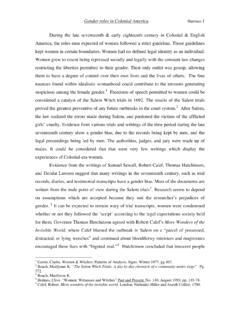Transcription of A Brief Description of the Levenberg-Marquardt ... - FORTH
1 A Brief Description of the Levenberg-Marquardt Algorithm Implemened by levmar Manolis I. A. Lourakis Institute of Computer Science Foundation for Research and Technology - Hellas ( FORTH ). Vassilika Vouton, Box 1385, GR 711 10. Heraklion, Crete, GREECE. February 11, 2005. Abstract The Levenberg-Marquardt (LM) algorithm is an iterative technique that locates the minimum of a function that is expressed as the sum of squares of nonlinear functions. It has become a standard technique for nonlinear least-squares problems and can be thought of as a combination of steepest descent and the Gauss-Newton method. This document briefly describes the mathematics behind levmar, a free LM C/C++ implementation that can be found at lourakis/levmar. Introduction The Levenberg-Marquardt (LM) algorithm is an iterative technique that locates the minimum of a multivariate function that is expressed as the sum of squares of non-linear real-valued functions [4, 6].
2 It has become a standard technique for non-linear least-squares problems [7], widely adopted in a broad spectrum of disciplines. LM can be thought of as a combination of steepest descent and the Gauss-Newton method. When the current solution is far from the correct one, the algorithm behaves like a steepest descent method: slow, but guaranteed to 1. converge. When the current solution is close to the correct solution, it becomes a Gauss-Newton method. Next, a short Description of the LM algorithm based on the material in [5] is supplied. Note, however, that a detailed analysis of the LM. algorithm is beyond the scope of this report and the interested reader is referred to [5, 8, 9, 2, 10] for more comprehensive treatments. The Levenberg-Marquardt Algorithm In the following, vectors . and arrays . appear in boldface and is used to denote transposition.
3 Also, and denote the 2 and infinity norms respectively. Let be an assumed functional relation which maps a parameter vector . to an estimated measurement vector .. An initial parameter es- timate and a measured vector are provided and it is desired to find the vector that best satisfies the functional relation , minimizes the squared distance ! ! with ! " # . The basis of the LM %$'algorithm &( . is a linear approximation to in the neighborhood of . For a small , a Taylor series expansion leads to the approximation $+& $4&.. *) -,. /. 0 1)32 (1). &:9. &. where 2 is the Jacobian matrix 5+687 . Like all non-linear optimization methods, 5. LM is iterative: 8 Initiated 8 . at the starting point 0 , the method produces a series of vectors <;+ =. ?>8 that converge towards a local minimizer $'&. for . Hence, at each $+&.
4 Step, . it is required $+to&B find . the $+&(.. that . minimizes $'the&. quantity @# /. A). # # ! #. , . 2 2 . The sought is thus $C&. the solution to a # ! linear least-squares problem: the minimum is $4attained &. when 2 is orthogonal $'&. # ! ED. to the column space of 2 . This leads to 2 /2 , which yields as the solution of the so-called normal equations [1]: $4& . ! 2 2 2 (2). The matrix 2 2 in the left hand side of Eq. (2) is the approximate Hessian, an approximation to the matrix of second order derivatives. The LM method actually solves a slight variation of Eq. (2), known as the augmented normal equations F $4&. ! 2 (3). F. where the off-diagonal elements of are identical to the corresponding elements FHG G I G G. of 2 2 and the diagonal elements are given by )KJL2 2NM for some IPORQ.. The strategy of altering the diagonal elements of 2 2 is called damping $C&.
5 I. and $4&is referred to as the damping term. If the updated parameter vector ). with computed from Eq. (3) leads to a reduction in the error ! , the update is accepted and the process repeats with a decreased damping term. Otherwise, the damping term is increased, the augmented $8&. normal equations are solved again and the process iterates until a value of that decreases error is found. The process of repeatedly solving Eq. (3) for different values of the damping term until an acceptable update to the parameter vector is found corresponds to one iteration of the LM algorithm. In LM, the damping term is adjusted at each iteration to assure a reduction in F. the error ! . If the damping is set $'to &. a large value, matrix in Eq. (3) is nearly diagonal and the LM update $'&. step is near the steepest descent direction.
6 More- over, the magnitude of is reduced in this case. Damping also handles situations where the Jacobian is rank deficient and 2 2 is therefore singular [3]. In this way, LM can defensively navigate a region of the parameter space in which the model is highly nonlinear. If the damping is small, the LM step approximates the exact quadratic step appropriate for a fully linear problem. LM is adaptive because it controls its own damping: it raises the damping if a step fails to reduce ! ; oth- erwise it reduces the damping. In this way LM is capable to alternate between a slow descent approach when being far from the minimum and a fast convergence when being at the minimum's neighborhood [3]. The LM algorithm terminates when at least one of the following conditions is met: S ! ! ! The magnitude of the gradient of , 2 in the right hand side of Eq.
7 (2), drops below a threshold TU;. $8&. S. The relative change in the magnitude of drops below a threshold TV>. S. The error ! ! drops below a threshold TXW. S. A maximum number of iterations Y is completed 0Z\[. If a covariance matrix ]_^ for the measured vector is available, it can be in- ; ;. corporated into the LM algorithm by minimizing the squared ]a^ ` -norm ! ] ^ ` ! instead of the Euclidean ! ! . Accordingly, the minimum is found by solving a weighted least squares problem defined by the weighted normal equations ; $4& ; ! .. 2 ] ^` 2 2 ] ^` (4). The rest of the algorithm remains unchanged. The complete LM algorithm is shown in pseudocode in Fig. 1. It is derived by slight modification of algorithm in page 27 of [5]; more details regarding the LM algorithm can be found W. there. Indicative values for the user-defined parameters are b dcCQ ` , Te; Tf>.
8 EcCQ ;/g EcCQhQ. TfW ` ,Y . levmar is a free C/C++ implementation of this LM al- 0Z\[. gorithm that can be found at lourakis/levmar. References [1] Golub and Van Loan. Matrix Computations. Johns Hopkins Uni- versity Press, 3rd edition, 1996. [2] Kelley. Iterative Methods for Optimization. SIAM Press, Philadelphia, 1999. [3] M. Lampton. Damping-Undamping Strategies for the levenberg - marquardt Nonlinear Least-Squares Method. Computers in Physics Journal, 11(1):110 115, 1997. [4] K. levenberg . A Method for the Solution of Certain Non-linear Problems in Least Squares. Quarterly of Applied Mathematics, 2(2):164 168, Jul. 1944. [5] K. Madsen, Nielsen, and O. Tingleff. Methods for Non-Linear Least Squares Problems. Technical Uni- versity of Denmark, 2004. Lecture notes, available at [6] marquardt . An Algorithm for the Least-Squares Estimation of Nonlin- ear Parameters.]
9 SIAM Journal of Applied Mathematics, 11(2):431 441, Jun. 1963. [7] Mittelmann. The Least Squares Problem. [web page]. , Jul. 2004. [Accessed on 4 Aug. 2004.]. [8] Nielsen. Damping Parameter in marquardt 's Method. Technical Report IMM-REP-1999-05, Technical University of Denmark, 1999. Available at hbn. [9] J. Nocedal and Wright. Numerical Optimization. Springer, New York, 1999. Input: A vector function : ji with kmlon , a measurement vector . H and an initial parameters estimate 0 p . %r Output: A vector H minimizing q# 0 /. 0 . Algorithm: uQ. Yts ; vts x ys ; &. z ! P # ! s 2 2 ; s 0 /. 0 ; { s 2 ;. % }| G G G. I . stop:=( { Te; ); s b ~ f ; % % % ;.. while (not stop) and ( Yt Y ). c Z\[. Y*s Y ) ;. repeat $4&. z IB . Solve %$4& |. ).. { ;. if Tf> . stop:=true;. else $+&.. s &( >. *) ;. > $ & $+&. 8 / ! # q# I.]}}
10 S /. ) {1 ;. O Q 8 / . if . ; & &. z 8 ! u q# ! s 2 2 ; s . ; { s 2 ;. % }| &( > |. ! stop:=( { Te; ) or ( TfW );. I I ; c # wf _#Pc W }w s ~ a : ( W ; vts ;. else I I }w s ~ v ; vts ~ v ;. endif endif until ( O Q ) or (stop). endwhile . s ;. Figure 1: Levenberg-Marquardt non-linear least squares algorithm; see text and [5, 8] for details. [10] Press, Teukolsky, Vetterling, and Flannery. Numer- ical Recipes in C: The Art of Scientific Computing. Cambridge University Press, New York, 1992.)










